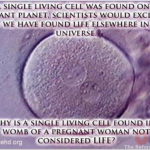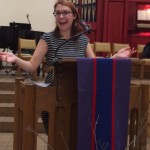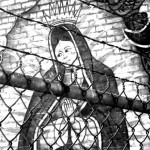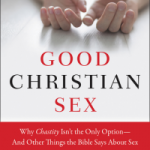I recently shared a post called “A Creed And A Call,” in which I shared my rewritten Apostles’ Creed, and then called for others to submit their own Liberating Liturgies–either liturgies that empower you, liturgies that you’ve rewritten to make them empowering, or empowering liturgies that you’ve written yourself!
I didn’t have room in that last post to do much commentary on my Apostles’ Creed, and I got several questions about it: Who is Sophia? Why Mother Bear? I’d like to take some time now to answer those questions and explain why I changed what I did, and why I chose the language I chose.
First, I’ll share my creed again for those who missed it:
I believe in God, our Mother Bear,
source of all being.
I believe in Jesus Christ, God’s wisdom made flesh,
along with Sophia, the church, and all that live in wisdom.
Born of the bad-ass womanist liberation theologian, Mary,
suffered under the systems of oppression of this world,
was crucified, died, and was buried,
forever joining in solidarity with those murdered by Empire.
On the third day, the women declared him risen;
signifying God’s “No” to oppression.
He points to God our Mother Bear,
who works in this world, calling for justice for the poor and oppressed.I believe in Sophia Spirit,
Christ’s body, the church,
the communion of saints,
the grace to reject this world’s systems,
hope for justice in the future,
and renewed life everlasting. Amen.
Our Mother Bear…
Mother Bear has recently become my favorite imagery for God. It comes from the book of Hosea, which contains a lot of grossly patriarchal and anti-sex worker imagery that I’m not fond of. But hidden under the misogyny, there is one gem of a verse that I find extremely powerful and subversive: Hosea 13:8
I will encounter them like a bear robbed of her cubs, And I will tear open their chests; There I will also devour them like a lioness, As a wild beast would tear them.
The Word of God for the people of God, amirite?
There’s some violent imagery in here that not everyone will feel comfortable with. I think it can be harmful imagery in the context of a patriarchal, violent, male God.
But in a different context, I think this imagery can be empowering.
Much feminist theology likes to talk about God as Mother, which is great. Unfortunately, some of it still ends up falling into gender essentialism and stereotypes of women. Ironically, some feminist God imagery can end up reinforcing patriarchal standards for womanhood.
I’m talking here about God as the kind, gentle, nurturing Mother who loves all. As Rosemary Radford Ruether points out in her book Sexism And God-Talk (see the chapter “Sexism and God Language), this is not enough. It only serves to limit who we, as women, can be.
The patriarchal church already lets women be nurturing, caring mothers. It thrives off of limiting our roles to nurturing children and providing free care-giving. Obviously, nurturing and caring are extremely important roles that the church, and the world, cannot live without. It is good to connect God with these roles, in order to give them the honor and value they deserve.
But we need imagery that challenges the idea that we are just nurtures and care-givers. We need Mother God imagery that frees us to follow all of our callings (in addition to Father God imagery and other Parent God imagery that calls all genders to participate in the universal calling for all humanity to care for one another and for creation).
Not only does this imagery for God limit women–it also idolizes a very specific type of womanhood. The womanhood emphasized in some feminist imagery is one that is often limited to women with the resources to be full-time nurturers–often white, upper/middle class women. It can be (it is not always, but it can be) used to put down women who love their children, but have to spend long hours at work away from their children in order to get by. It doesn’t do much to affirm the women who are providers. Who have to fight to defend their children from a world that hates them. It can reflect the patriarchal myth that woman can only be “good” mothers if they are stay-at-home mothers.
This is why I am drawn to God Our Mother Bear, or God The Liberating Lioness found in Hosea 13:8.
The context of this verse is God’s anger at Israel for neglecting God’s justice, God’s commands to care for the marginalized and the poor and the abused and the oppressed.
Mother Bear loves Her children–the poor and oppressed. Mother Bear cares for them and feeds them. She nurtures them and plays with them and snuggles them.

But Mother Bear is not just nurturing.
She is strong. She is fierce. She is powerful and terrifying. She is a provider. She is a protector. She will rip apart anyone who tries hurt Her cubs.
Hers is a love that liberates.
The only way we can avoid our images of God being co-opted by patriarchy, used to oppress and limit women, is with a plurality of images for Her. Mother Bear is one of those images that I appreciate right now. How about you?
——-
In the weeks to come, I’ll be commenting on some of the other imagery in my Apostles’ Creed. I’ll also be sharing some of my other Liberating Liturgies. But as I said, a plurality of images for God is important. A plurality of images will allow us to subvert patriarchy and other oppressions as they try to co-opt God imagery for their own use. If you are interested in submitting your won Liberating Liturgies to this project, read this blog post, and email me at [email protected]











